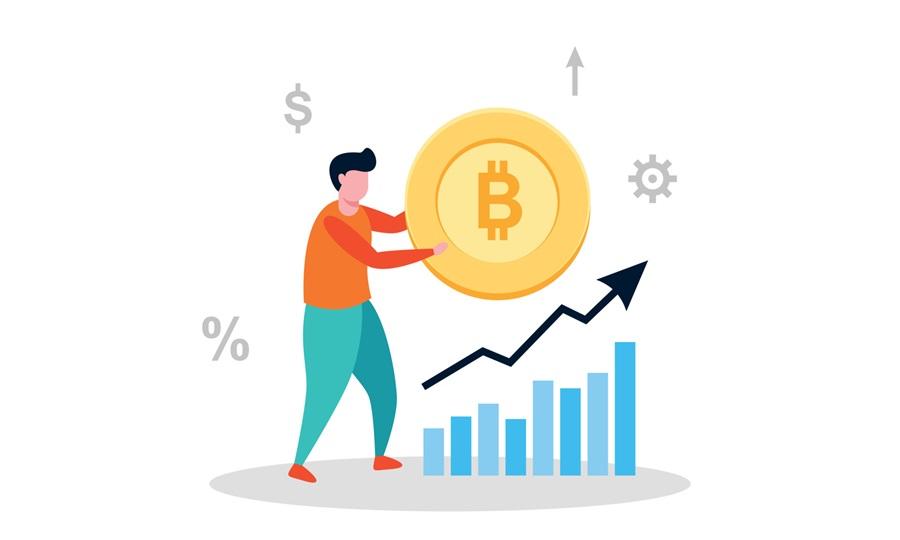Drivers of Growth: The Factors Fueling Crypto Prices

News about the swift and sudden fluctuations of crypto prices has reached even the most far-flung corners of the globe, spreading awareness of the volatile nature of digital currencies. Nevertheless, people and, more recently, institutions continue to invest in this innovative yet risky asset class, with the main incentive being the significant appreciation potential that crypto has demonstrated over the years.
Despite their rollercoaster performance, digital currencies have experienced significant growth since their debut, which has highlighted their appeal as a store of value. Just look at Bitcoin’s trajectory, for instance. The initiator and leader of the crypto crew went from being worth close to nothing in 2009 to trading at a six-figure level. And Bitcoin’s rise, although unparalleled, is not a singular case in the market. Many other crypto assets like Ethereum (ETH), Binance Coin (BNB), Ripple (XRP), or Solana (SOL) have seen notable growth over time. If you want to stay up to date with the price evolution of the best cryptocurrencies, you can find accurate and reliable information in this respect on platforms such as Binance, alongside other valuable data and metrics.
But knowing that crypto is capable of serving some impressive rallies is not enough if you’re serious about investing in these types of assets. You need to dig deeper and understand what truly drives crypto prices upward, so you can make decisions based on facts and real data, and become a more confident investor who can navigate this volatile market safely.
The Fear of Missing Out (FOMO)
In order to get to the bottom of crypto’s growth, one needs to understand the psychology of the people who invest in it, since they are the ones who push the market forward. Many try to find rational explanations for crypto’s rise, when in reality these price movements are often fueled by irrational behavior – particularly by the fear of missing out or FOMO, in short.
One should not forget that investors are only human, and like all humans, they are prone to making impulsive decisions prompted by two primary emotions: fear or greed. That’s not to say all investors act without thinking things through, but it’s difficult to always think logically and not be tempted to make a move when you get the impression that everyone around you is making huge gains and you’re constantly being bombarded with news of price surges and promising crypto projects. People simply don’t want to miss out on a great investment opportunity, so they jump in, despite knowing the risks they expose themselves to, which causes prices to rise substantially. Basically, the fear of missing out becomes stronger than the fear of experiencing losses.
Macroeconomic Influences
It was once believed that crypto is completely immune to macroeconomic forces, since it’s an entirely digital and largely decentralized form of money that doesn’t need any intermediaries to function, so it’s not tied to governments, banks, or financial institutions. However, we have since come to learn that digital assets are not insulated from the realities of the traditional financial system. The economic events that take place in the world have a direct impact on their evolution.
When countries are grappling with inflation, geopolitical tensions, or financial challenges, as has been the case many times in recent years, people naturally start looking for a safe haven to help them protect their wealth, and crypto seems like a good option thanks to its ability to act as a store of value. Bitcoin, in particular, is commonly used as a hedge against inflation, given its strong track record, tokenomics (fixed supply, quadrennial halving), and independence from central banks, drawing comparisons to gold.
Crypto prices also tend to spike when interest rates are low because that diminishes returns on traditional investment instruments, which encourages investors to seek riskier assets like crypto that could yield higher returns. Also, borrowing becomes cheaper, and it’s easier for people to raise capital to invest in digital currencies.
Growing Adoption Across Industries
Since crypto has already become a mainstay in many areas of the economy, we’re now seeing a growing number of companies and organizations adopting it, as they’ve realized it’s only a matter of time until digital assets achieve mainstream acceptance. Some have started including crypto in their payment systems; others have embraced it through tokenization or investments in products that offer indirect exposure to digital currencies, such as exchange-traded funds (ETFs) or proxy stocks.
Crypto’s ongoing integration into financial and business structures across a growing range of industries highlights its potential and increases its real-world utility, which in turn contributes significantly to its appreciation.
Bitcoin’s Movements
Bitcoin has always been the market leader, not just in terms of value but also in terms of influence. Whenever Bitcoin rises, the market rises with it. Historical performance demonstrates that altcoins typically mirror Bitcoin’s movement, although the effect is not immediate. However, there’s no denying that Bitcoin’s rallies reverberate throughout the entire market, with some coins jumping higher than others. Similarly, when Bitcoin’s price drops, investors’ confidence also declines, and the entire market suffers as a result.
Innovation
Many crypto projects are in a constant state of development and are deeply focused on innovation. Take Ethereum, for example. The blockchain has all but revolutionized the industry with its smart contract functionality and the host of dApps and NFTs it supports, and is constantly rolling out new upgrades to further enhance its performance. XRP, Ripple’s brainchild, has also attracted attention with its advanced technological features that have turned it into one of the fastest and most efficient networks and a key player in the cross-border transactions market.
Innovations create utility and buzz, and that draws in users and investors. Whenever there’s something new and positive happening, whether it’s a project launch, meme coins going viral, or regulatory developments, market participants come rushing in, and we all know that in the crypto space, there’s no shortage of newness. All this progress increases engagement and demand and, subsequently, leads to higher prices.
When crypto prices rise, it’s usually because of a combination of factors that come together at the right time. Being aware of them can make it easier for you to decipher market dynamics and make better investment decisions.






